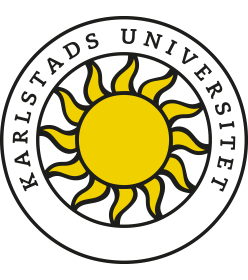Chemical Calculations
7.5 ECTS creditsThe course comprises a theoretical module and a laboratory module. Learning outcome 9 only relates to the laboratory module, while the other components can be treated in either module.
Learning outcome 1: numerical values, significant figures, converting units, unit analysis
Learning outcome 2: the ideal gas equation, pressure, volume, temperature, amount of substance, the gas constant
Learning outcome 3: empirical formula, molecular formula
Learning outcome 4: chemical reactions in general, redox reactions in particular, molecular reaction equation, ionic reaction equation, net ionic reaction equation, limiting reagents, yield in chemical reactions, simple electrolysis problems, concentration, amount of substance, mass, molar mass
Learning outcome 5: dynamic equilibrium, activity, activities at equilibrium, concentrations at equilibrium, the acid constant (Ka), the base constant (Kb), conjugated acid-base pair, solubility product (Ksp), solubility, complex constant, equilibrium constant (concentration, Kc and pressure, Kp), reaction quotient, Le Châtelier's principle, common reactant, the autoionisation of water, pKa, pKb, pKw
Learning outcome 6: pH, pOH, pH indicators, pH calculations, buffer solutions, buffer equation (Henderson-Hasselbalch), preparation of buffer solutions
Learning outcome 7: concentration, amount of substance, mass, molar mass, calculate the dilution of solutions, redox titration, acid-base titration
Learning outcome 8: kinetics, the rate of a reaction, rate constant, half-life, the Arrhenius equation, activation energy
Learning outcome 9: practical laboratory work based on theory treated in the course, laboratory safety, and results from the laboratory work reported according to instructions.
Learning outcome 1: numerical values, significant figures, converting units, unit analysis
Learning outcome 2: the ideal gas equation, pressure, volume, temperature, amount of substance, the gas constant
Learning outcome 3: empirical formula, molecular formula
Learning outcome 4: chemical reactions in general, redox reactions in particular, molecular reaction equation, ionic reaction equation, net ionic reaction equation, limiting reagents, yield in chemical reactions, simple electrolysis problems, concentration, amount of substance, mass, molar mass
Learning outcome 5: dynamic equilibrium, activity, activities at equilibrium, concentrations at equilibrium, the acid constant (Ka), the base constant (Kb), conjugated acid-base pair, solubility product (Ksp), solubility, complex constant, equilibrium constant (concentration, Kc and pressure, Kp), reaction quotient, Le Châtelier's principle, common reactant, the autoionisation of water, pKa, pKb, pKw
Learning outcome 6: pH, pOH, pH indicators, pH calculations, buffer solutions, buffer equation (Henderson-Hasselbalch), preparation of buffer solutions
Learning outcome 7: concentration, amount of substance, mass, molar mass, calculate the dilution of solutions, redox titration, acid-base titration
Learning outcome 8: kinetics, the rate of a reaction, rate constant, half-life, the Arrhenius equation, activation energy
Learning outcome 9: practical laboratory work based on theory treated in the course, laboratory safety, and results from the laboratory work reported according to instructions.
Progressive specialisation:
G1F (has less than 60 credits in first‐cycle course/s as entry requirements)
Education level:
Undergraduate level
Admission requirements:
General admission requirements plus Chemistry 2 and Mathematics 4/Mathematics E, or enrolled in the Chemical Engineering Master programme, or equivalent
Selection:
Selection is usually based on your grade point average from upper secondary school or the number of credit points from previous university studies, or both.
This course is included in the following programme
- Drug Analysis - Bachelor Programme in Chemistry (studied during year 1)
- Master of Science in Chemical Engineering (studied during year 2)
